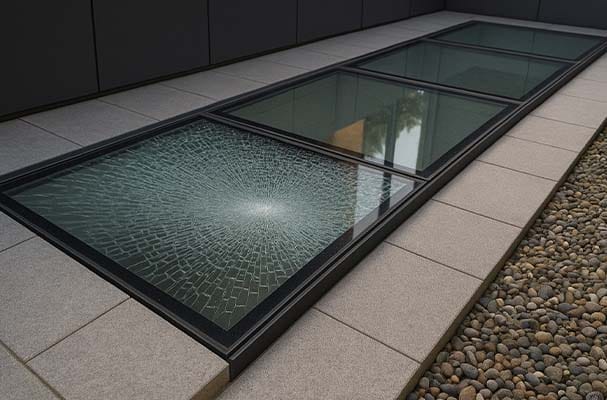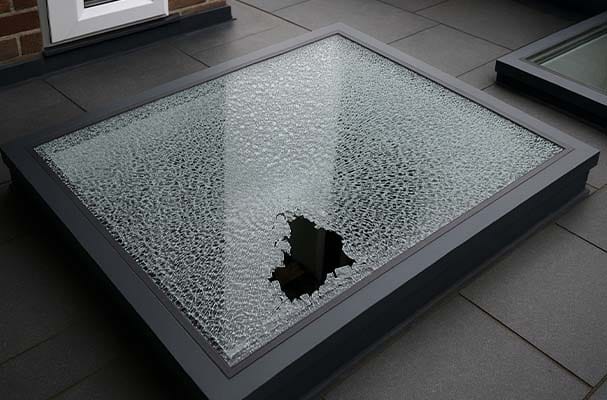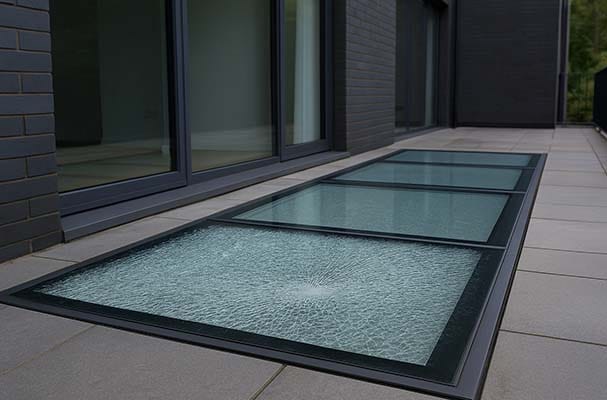A bird strike, dropped tool, or storm branch may leave no mark on toughened glass yet start a flaw that grows later.
How to specify for fewer surprises
For rooflights and skylights, a robust baseline looks like this in plain English. Use toughened-laminated safety glass so there is post-breakage integrity. Ask for heat-soak tested toughened glass for the toughened plies where the project is exposed, elevated, people are underneath, or the client simply wants the extra peace of mind. Match the glass to the orientation: solar-control coatings for strong south and west sun reduce summer temperature peaks; low-iron glass keeps thick edges looking clean. Choose frames that support evenly and drain well; standing water ruins clarity and seals.
For walk-on glass, follow the load category honestly, specify anti-slip finishes that don’t trap heat at the surface, and confirm that the support steel or concrete is stiff enough to keep deflections within the glass supplier’s limits. None of this is exotic; it is the everyday craft of doing glass well.
Installation and use: small details that matter
Key Points for Installing and Maintaining Rooflights and Walk-On Glass
During Installation:
- Never drag glass edges across hard surfaces.
- Place setting blocks with the correct hardness exactly where the manufacturer specifies.
- Clean channels thoroughly before glazing so grit cannot bite into the edge.
- Ensure the bite is generous enough to support the pane without pinching it.
- Detail weathering so water drains away from the area rather than pooling.
After Handover / Everyday Use:
- Do not hose cold water over a sun-heated rooflight; allow it to cool first.
- Avoid leaving a dark blackout blind tight against a sunlit pane for hours in midsummer; leave breathing space or use a reflective blind on the hottest days.
- Keep drainage paths clear so hot metalwork does not radiate into a waterlogged channel around a cool glass edge.
If a pane breaks, what should you do?

Toughened glass usually granulates and drops into the rebate or onto the roof surface; laminated constructions hold together. If the unit is overhead, clear the area below, protect the interior from weather, and document what you see. Photographs of the fragment pattern, the edges and the surrounding frame help a fabricator or insurer understand the likely cause. If the laminated glass still holds, plan a controlled replacement—not an emergency.
Use the incident to inspect details—uneven shading, tight blinds, trapped water, recent work on the roof. One failure is bad luck; a second is preventable.
The bottom line: rare, explainable, and manageable
Spontaneous breakage sounds dramatic because the failure is audible and the result is obvious. In reality, the risk can be made very small. Thermal stress is tamed by sensible shading and even support. NiS is screened by heat-soak testing. Installation chips are avoided by clean handling and the right setting blocks. Walk-on glass behaves itself for decades when it is designed as structure, not ornament.
For most homeowners, it’s simple: use tested laminated glass, smart frames, and a bit of common sense.
Do that, and your rooflights will stay reliable — while spontaneous breakage stays rare.





